Track, evaluate, and improve warehouse operations while having a thorough understanding of worker performance. Operations managers can monitor how effectively workers perform crucial warehouse tasks, such as receiving, picking, and putaway. These tasks can be seen across specified timeframes, vendors, users, and more.
Receiving Queues Activity Tracking
With access to real-time data on completed Purchase Orders (POs), warehouse managers can review how long employees take to receive inventory into the warehouse. Filter by date range, operator/user, or vendor to isolate specific performance metrics. A breakdown by completion time—under 5, 15, 30, or 60 minutes—lets teams identify bottlenecks and improve inbound logistics efficiency. Use summaries to evaluate overall receiving performance or drill down by user or vendor to target training and streamline operations.
Picking Queues Activity Tracking
Ensure customer satisfaction by maintaining timely and accurate order fulfillment. The Pick Queue Report lets users view completed pick tasks with filters for date range, operator/user, or customer. Track pick duration and assess pick rates to ensure outbound orders are moving swiftly. Summary views offer detailed comparisons across employees and customers to support performance evaluations, staffing decisions, and warehouse flow optimization.
Putaway Queues Activity Monitoring
Streamline the internal movement of inventory with clear insights into Putaway Queue operations. This critical process ensures that received items are quickly and correctly placed into storage locations. Using similar filters and time-based summaries, the system provides visibility into how efficiently employees complete putaway tasks. Monitor by operator/user, date range, or customer, and compare across time thresholds to pinpoint areas for layout improvements or procedural enhancements.
Comprehensive Time-Based Reporting
All warehouse activity reports—Receiving, Picking, and Putaway—allow filtering by:
• Finish Date Range: Focus on specific reporting periods. Filtering by date range prevents the system from retrieving and processing unnecessary data, improving report speed. It also allows you to focus on relevant time periods without sifting through massive amounts of data. This targeted approach ensures more accurate performance analysis and supports timely decision-making.
• Operator/User: Track individual employee performance. Filtering by operator or user gives managers a focused view of employee productivity across warehouse tasks. This allows for accurate performance tracking, recognition of high performers, and identification of training opportunities. By isolating task completion times per user, teams can make informed decisions on workforce planning, role assignments, and process optimization—ultimately improving operational efficiency.
• Vendor/Customer: Gain insight into external factors influencing speed. Analyzing task metrics by vendor helps identify suppliers that may cause delays during receiving, while customer-specific trends in picking or putaway highlight unique service demands. These insights support better vendor management, customer service enhancements, and more efficient allocation of warehouse resources.
Employee Activity
Overview
Receiving Activity
-
Receiving Activity
A detailed report to show how efficiently employees are receiving a purchase order that is being received into the warehouse.
1. Go to Reports Menu and hover over Inventory to select Receiving Queues.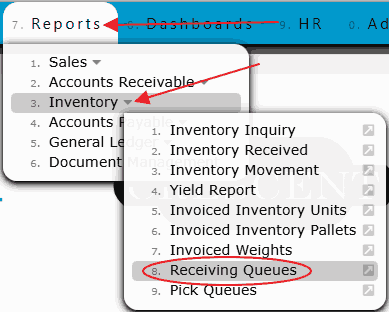
2. There are a variety of ways to narrow down the report. Completed received purchase orders can be searched by using the Finish Date Range, Operator/User, or Vendor.
Search Completed Received POs by Finish Date Range:
Search Completed Received POs by Operator or User:
Search Completed Received POs by Vendor:
3. To see an overview of the amount of time it took for an employee to complete receiving a purchase order, enter a date range and select Show All. A summary of your report can be filtered by Overall, Operator/User or Vendor. Filter the summary by selecting the Receiving Activity Completed in under 5, 15, 30 or 60 minutes. All picks will be split up in time factors at the bottom of the page depending on the summary chosen.
View Summary of Report by Operator or User: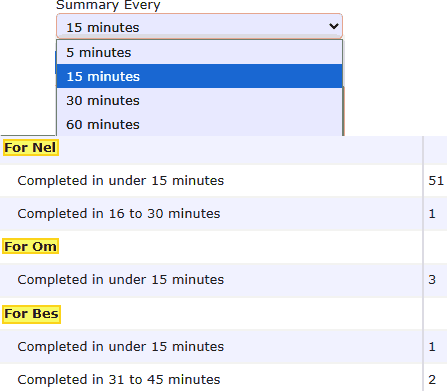
View Summary of Report by Vendor: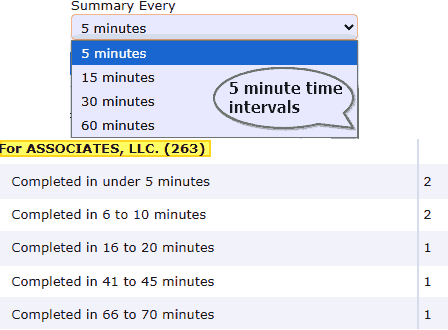 View a Summary of the Report by the amount of minutes a pick is completed:
View a Summary of the Report by the amount of minutes a pick is completed: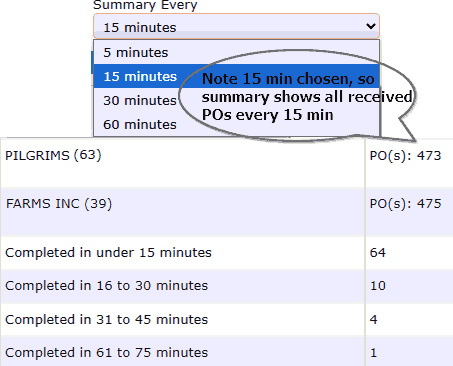 View the Summary organized by Overall, Operator/User or Vendor:
View the Summary organized by Overall, Operator/User or Vendor:
Overall:
Operator/User:
Vendor:
Outbound Activity
-
Picking Activity
A detailed report to show how efficiently employees are picking an order that is leaving the warehouse.
1. Go to the Reports Menu and hover over Inventory to select Pick Queues.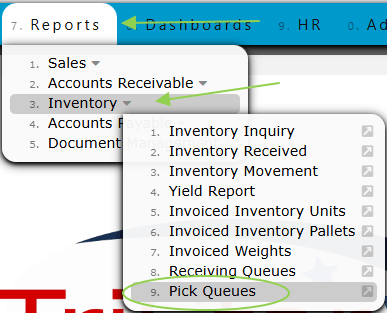
2. There are a variety of ways to narrow down the report. Completed picked orders can be searched by using the Finish Date Range, Operator/User, or Customer.
Search Completed Picks by Finish Date Range: Search Completed Picks by Operator or User:Search Completed Picks by Customer:
Search Completed Picks by Operator or User:Search Completed Picks by Customer:

3. To see an overview of the amount of time it took for an employee to complete picking an order, enter a date range and select Show All. A summary of your report can be filtered by Overall, Operator/User or Customer. Filter the summary by selecting the Pick Completed in under 5, 15, 30 or 60 minutes. All picks will be split up in time factors at the bottom of the page depending on the summary chosen.
View Summary of Report by Operator or User: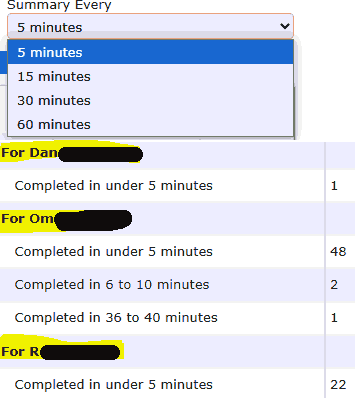 View Summary of Report by Customer:
View Summary of Report by Customer: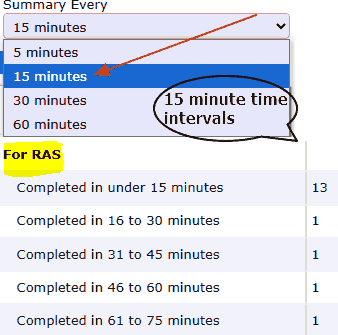 View a Summary of the Report by the amount of minutes a pick is completed:
View a Summary of the Report by the amount of minutes a pick is completed:
View the Summary organized by Overall, Operator/User or Customer:
Overall:
Operator/User:
Customer: